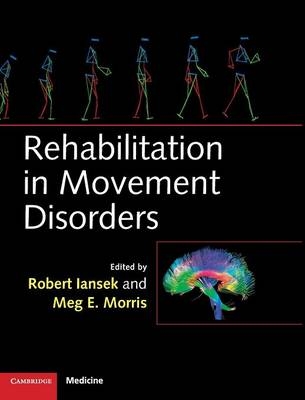
Rehabilitation in Movement Disorders
Cambridge University Press (Verlag)
978-1-107-01400-8 (ISBN)
Movement disorders affect a growing patient population, but providing comprehensive care is extremely difficult. Several of these conditions are progressive and incurable; the basal ganglia has a complex role in movement control, with many potential malfunctions. This book focuses on rehabilitation approaches that have been developed and utilized internationally in an attempt to minimize impairment and maximize participation amongst these patients. Each chapter is written by movement disorder experts, rehabilitation specialists and health care professionals, giving a broad overview of current interventions and emphasizing the need for interdisciplinary management, focussing on deliverable outcomes. Common conditions such as Parkinson's disease, cerebral palsy, dystonia and Huntington's disease are comprehensively covered. This book gives neurologists, geriatricians and rehabilitation specialists an up-to-date, theoretically-based approach to managing movement disorders related to basal ganglia malfunction. Also valuable for physiotherapists, occupational therapists, speech pathologists, nurses and social workers seeking to develop and plan appropriate interventions.
Robert Iansek, BMedSci, MBBS, Ph.D., FRACP is Director, Clinical Research Centre for Movement Disorders and Gait, Kingston Centre, Southern Health, Victoria, Australia. Meg E. Morris, Ph.D., FACP is Professor, School of Allied Health, Faculty of Health Sciences, La Trobe University, Bundoora, Australia.
Preface; Part I. Background Concepts: 1. Functional neuroanatomy and physiology in movement disorders Nicola Pavese and David J. Brooks; 2. Pathophysiology of basal ganglia disorders: neurophysiological investigations Alfredo Berardelli and Antonio Suppa; Part II. Intervention Options: 3. Medical management of movement disorders Louis C. S. Tan and Kulthida Methawasin; 4. Functional neurosurgery of movement disorders Travis S. Tierney and Andres M. Lozano; 5. Peripheral surgical and movement modification therapies for movement disorders Barry Rawicki; Part III. Roles of the Multidisciplinary Team: 6. The role of physiotherapy in the rehabilitation of people with movement disorders Lynn Rochester, Sue Lord and Meg E. Morris; 7. The role of occupational therapy in the rehabilitation of people with movement disorders Ana Aragon, Jill Kings and Diane Playford; 8. The role of nursing in the rehabilitation of people with movement disorders Allison F. Williams, Siok Bee Tan and Victor McConvey; 9. The role of neuropsychology in the rehabilitation of people with movement disorders Georg Dirnberger and Marjan Jahanshahi; 10. The role of the speech pathologist in the rehabilitation of people with movement disorders Deborah Theodoros; 11. The role of social work in the rehabilitation of people with movement disorders Ralph Hampson and Lynette Joubert; Part IV. Rehabilitation of Specific Conditions: 12. Rehabilitation principles in chronic neurological conditions in adults and children John Olver, Gavin Williams, Brooke Adaire and Meg Morris; 13. Rehabilitation of Parkinson's disease Robert Iansek and Meg E. Morris; 14. Rehabilitation of Parkinsonian syndromes David R. Williams; 15. Rehabilitation of Huntington's disease Belinda Bilney and Alan Pearce; 16. Rehabilitation of dystonia Daniele Volpe and Giovanni Abbruzzese; 17. Rehabilitation of Friedreich ataxia Sarah Milne, Emma Campagna, Martin B. Delatycki and Louise A. Corben; 18. Rehabilitation of cerebral palsy Pam Thomason and H. Kerr Graham; 19. Rehabilitation of developmental disorders and motor dysfunction Nicole Rinehart, Rachael MacDonald, Chloe Stanley-Cary and Jennifer L. McGinley; Part V. Measurement of Therapy Outcomes: 20. Selection of clinical outcome measures in rehabilitation of people with movement disorders: theory and practice Jennifer L. McGinley and Mary Danoudis; Index.
| Erscheint lt. Verlag | 23.5.2013 |
|---|---|
| Zusatzinfo | 28 Tables, black and white; 7 Plates, color; 9 Halftones, unspecified; 43 Line drawings, unspecified |
| Verlagsort | Cambridge |
| Sprache | englisch |
| Maße | 195 x 253 mm |
| Gewicht | 750 g |
| Themenwelt | Medizin / Pharmazie ► Medizinische Fachgebiete ► Neurologie |
| Studium ► 1. Studienabschnitt (Vorklinik) ► Physiologie | |
| ISBN-10 | 1-107-01400-X / 110701400X |
| ISBN-13 | 978-1-107-01400-8 / 9781107014008 |
| Zustand | Neuware |
| Haben Sie eine Frage zum Produkt? |
aus dem Bereich


